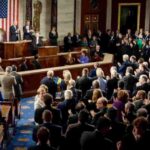The recent stock market scare, which saw the S&P 500 erase trillions in hours, made big financial firms on Wall Street reassess their stances on the probability of recession in the U.S.
One of these is JPMorgan, which lifted its recession probability in the U.S. by the end of the year from 25% at the start of July to 35% as of August.
Conversely, they now predict just a 30% chance of the Federal Reserve keeping the rates unchanged, down from a 50% chance from the June assessment.
Economists, headed by Bruce Kasman, in a note to clients released on August 7, stated,
“This modest increase in our assessment of recession risk contrasts with a more substantial reassessment we are making to the interest rate outlook; JPMorgan now sees just a 30% chance of the Federal Reserve and its peers keeping interest rates “high-for-long.”
Institutional giants increase odds of a recession
In a similar stance, Goldman Sachs analysts increased their probability of a U.S. recession from 15% to 25% in an analysis released on August 4.
However, lead economist Jan Hatzius and his team view such risk as limited, as the overall U.S. economy looks “fine,” and if needed, the Federal Reserve can quickly cut the interest rates and by a significant amount to assess any financial troubles that may emerge ahead.
What caused the recession scare among the experts?
The July unemployment report marked the fourth consecutive month of rising unemployment rates, reaching 4.3%, the highest level since November 2021. This prompted the Sahm Rule indicator to sound an alarm.
Named after former Federal Reserve and White House economist Claudia Sahm, The Sahm Rule is an economic downturn indicator that uses monthly U.S. unemployment reports to gauge the economy’s direction.
According to the July report, the unemployment rate rose by 0.5 percentage points above its lowest in the past 12 months.








